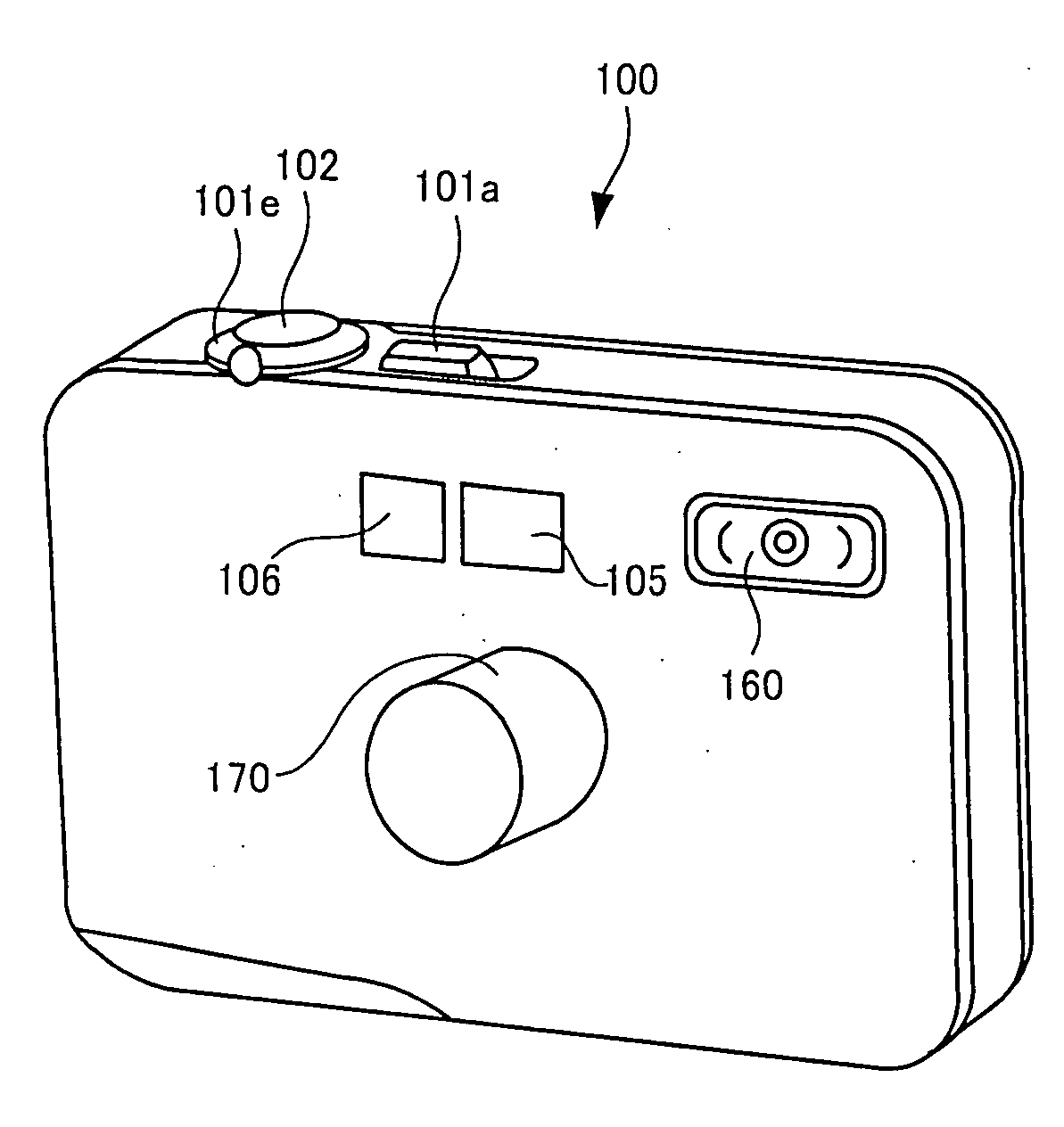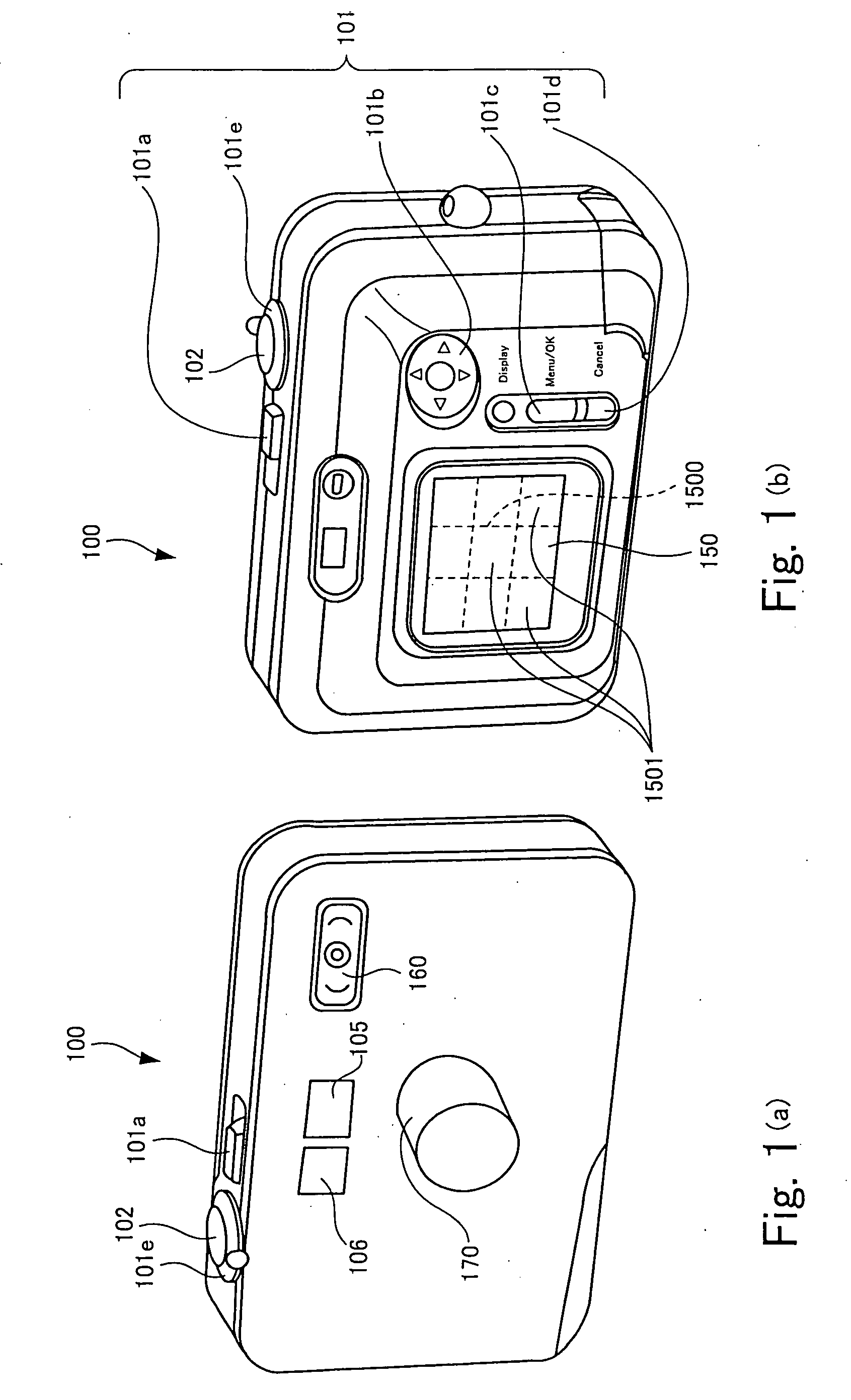Image-taking apparatus
a technology of image-taking apparatus and exposure control, which is applied in the direction of optical radiation measurement, exposure control, instruments, etc., can solve the problem of not being able to correct the exposure of the entire screen
- Summary
- Abstract
- Description
- Claims
- Application Information
AI Technical Summary
Benefits of technology
Problems solved by technology
Method used
Image
Examples
first embodiment
[0053] FIGS. 1(a) and 1(b) show a digital camera according to the image-taking apparatus of the present invention.
[0054] FIGS. 1(a) and 1(b) are perspective views of the front and back of the digital camera according to the first embodiment, as viewed obliquely from above, respectively.
[0055] As shown in FIG. 1(a), a digital camera 100 of the present embodiment has a lens barrel 170 with a built-in shooting lens and a charge-coupled device (CCD) solid imaging device (hereinafter referred to as “CCD”), in which an image of a subject is led to the CCD through the shooting lens. The digital camera 100 is configured such that the CCD generates image signals representing a through image (live view) or a taken image and a main CPU performs through-the-lens (TTL) distance measurement and TTL metering to detect a subject distance and subject brightness. The CCD and the main CPU will be described later more in detail.
[0056] A shooting angle of view is two-dimensionally divided into distanc...
second embodiment
[0093] FIGS. 6(a) and 6(b) show an external appearance of a digital camera 100A according to the FIG. 7 shows an internal configuration of the digital camera 100A shown in FIGS. 6(a) and 6(b). FIGS. 8(a) and 8(b) show a subject area (representing a shooting angle of view) to be captured by an image-taking optical system built in the lens barrel 170 shown in FIGS. 6(a) and 6(b).
[0094] In this digital camera 10A, the main CPU 110 (or metering / distance-measuring CPU 120) performs light adjustment by emitting pre-flash lights and causing the CCD 112 to receive reflected lights from a subject. Therefore, the digital camera 100A is provided with no window similar to the light adjustment window 106 shown in FIG. 1 and no sensors similar to the light-receiving sensors 1201 through 1209 shown in FIG. 2. Except for such difference, the digital camera 100A shown in FIGS. 6(a) and 6(b) is the same as the digital camera 100 shown in FIG. 1.
[0095]FIG. 8(a) shows a shooting angle of view that is...
PUM
 Login to View More
Login to View More Abstract
Description
Claims
Application Information
 Login to View More
Login to View More - R&D
- Intellectual Property
- Life Sciences
- Materials
- Tech Scout
- Unparalleled Data Quality
- Higher Quality Content
- 60% Fewer Hallucinations
Browse by: Latest US Patents, China's latest patents, Technical Efficacy Thesaurus, Application Domain, Technology Topic, Popular Technical Reports.
© 2025 PatSnap. All rights reserved.Legal|Privacy policy|Modern Slavery Act Transparency Statement|Sitemap|About US| Contact US: help@patsnap.com



